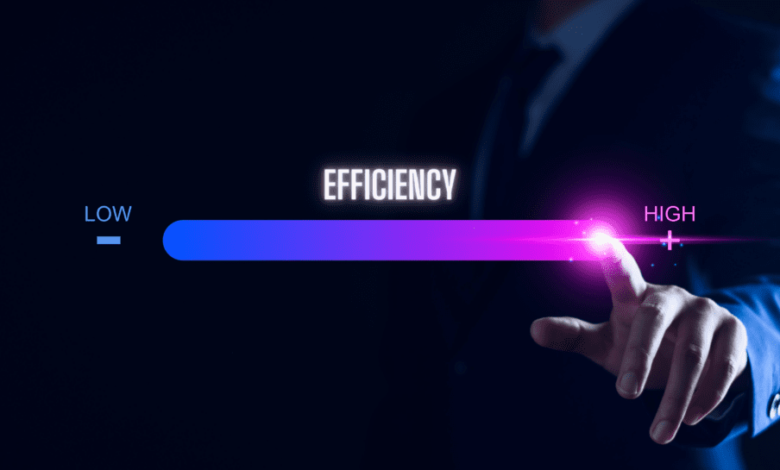Driving Operational Efficiency Through Business Process Modelling

In today’s competitive business landscape, organizations are under constant pressure to operate more efficiently while maintaining or improving quality. Failure to optimize operations can lead to wasted resources, delayed deliveries, and dissatisfied customers. Business process modelling provides a structured approach to identify areas for improvement and design more efficient workflows.
The Knowledge Train’s BCS modelling business processes certification is a professional certification designed to equip practitioners with the necessary skills and knowledge to effectively map, analyze, and optimize business processes within an organization.
Business Process Modelling Explained
Business process modeling involves creating visual representations of how workflows through an organization. These models illustrate the sequence of activities, decision points, and interactions between different departments and systems. Practicing business process modeling allows teams to gain a better understanding of their current operations before attempting to improve them.
Effective process models capture three essential elements: inputs, processes, and outputs. Inputs include any raw materials, information, or requests that initiate activities within the process. The processes themselves represent the actual work performed, while outputs are the final products, services, or results delivered to customers or other stakeholders.
Types of Process Models
There are various modeling techniques that serve different purposes depending on the complexity of the processes being analyzed. Flowcharts provide simple visual representations suitable for documenting basic processes. In contrast, Business Process Model and Notation (BPMN) offers a more detailed and standardized approach for specifying complex workflows.
Value stream maps focus specifically on identifying waste and bottlenecks in production processes. Each of these techniques has its strengths and ideal use cases. For example, flowcharts work well for training new employees or documenting straightforward procedures. In contrast, BPMN is better suited for detailed analysis and system integration planning.
Benefits of Process Modelling
Organizations that implement systematic business process modelling report measurable improvements across several key areas. Reduced processing times, lower error rates, and enhanced customer satisfaction are common outcomes experienced by companies that adopt this practice. These benefits stem from a deeper understanding of existing operations coupled with targeted efforts to optimize them.
In addition to operational gains, process models can also support compliance efforts by providing documented evidence of procedures used within an organization. This documentation can help ensure regulatory requirements are met and passed during audits. Clear process documentation also mitigates risks associated with staff turnover and knowledge gaps.
Operational Improvements Through Modelling
Modelling can reveal hidden inefficiencies that consume valuable time and resources without adding value to customers. Duplicate activities, unnecessary approvals, and communication gaps often become apparent when mapping out a process visually. Once these problem areas are identified, teams can work together to eliminate or streamline them, leading to significant improvements.
Quality improvements frequently follow process optimization initiatives since errors naturally decrease when teams have a clear understanding of the correct sequence of activities and decision criteria. Standardized processes resulting from successful modelling efforts also make training more effective and consistent across the organization.
Getting Started with BCS Business Analysis
For those looking to develop expertise in business process modelling, the British Computer Society (BCS) offers a comprehensive Business Analysis certification program that includes training in various process modelling techniques. This program covers both theoretical foundations as well as practical application methods. Participants will learn industry-standard approaches that have been adopted by leading organizations worldwide.
BCS certification provides professional recognition of competence to both employers and clients alike. The qualification is recognized across multiple industries and geographic regions. Hiring managers often prefer certified practitioners when seeking to fill business analyst or process improvement specialist roles within their organizations.
Core Skills for Process Improvement
The certification program focuses on developing several critical capabilities essential for effective process improvement. These skills include:
- Process mapping using standard notation systems
- Stakeholder analysis and requirements gathering
- Gap analysis between current and desired future states
- Change management planning and implementation
- Performance measurement and monitoring techniques
The above-listed skills have universal applicability across various industries and organizational types, including manufacturing companies, service providers, government agencies, and non-profit organizations.
Implementation Strategies for Process Modelling
Successful process modeling projects typically follow structured approaches to ensure success. The initial phases of such initiatives involve understanding current operations and identifying potential areas for improvement. Subsequent phases focus on designing new processes and managing the transition towards improved workflows.
Stakeholder engagement remains crucial throughout the implementation of any process changes since multiple departments and individuals are likely affected by these changes. Early involvement of stakeholders helps minimize resistance and improve adoption rates.
Common Implementation Steps
While implementation steps can vary depending on the specific context and nature of the process improvements being pursued, most successful projects follow these general phases:
- Define project scope and objectives clearly
- Map out existing processes in detail
- Identify problems and opportunities for improvement
- Design optimized future processes
- Plan the implementation approach and timeline
- Execute changes with appropriate support structures in place
- Monitor results and adjust as needed
Each phase requires specific skills and tools to accomplish effectively. Process mapping software, for instance, helps create professional-quality diagrams to represent current and future states visually.
Project management techniques keep initiatives on track and change management approaches address human factors that influence success rates.
Measuring Success in Process Improvement
Effective process improvement requires clearly defined and measurable outcomes. Key performance indicators (KPIs) should be established before implementing changes to track progress and assess whether objectives have been met. Common metrics used for KPIs include cycle time, error rates, customer satisfaction scores, and cost per transaction or unit produced.
Regular monitoring is essential to identify when processes drift from their optimal performance levels. Periodic reviews of processes ensure improvements are sustained over time, with some organizations establishing continuous improvement programs to maintain momentum.
Technology Integration in Process Modelling
Modern process modeling often involves integrating technological components into improved workflows. Automated workflow systems can enforce new processes while collecting performance data automatically. Integration with existing systems is critical for reducing manual workloads and improving accuracy.
Technology should support optimized processes rather than dictating their design from the outset. Successful organizations tend to focus on process design first before considering technology selection, best aligning capabilities with enhanced business workflows.
Building Internal Process Improvement Capabilities
Long-term success in process improvement requires developing internal capabilities to tackle challenges sustainably over time. Training existing staff members in business process modelling techniques creates an ongoing source of expertise within an organization. With internal resources skilled in these techniques, multiple process challenges can be addressed without relying on external consultants every time.
Cross-functional teams often yield the best results since representatives from different departments ensure models reflect actual working conditions accurately. Diverse perspectives within such teams help identify more opportunities for improvement than might be apparent to teams drawn from a single department.
Conclusion
Business process modeling represents a proven methodology for driving operational improvements within organizations. By investing in systematic process analysis and optimization, companies can achieve measurable gains in efficiency, quality standards, and customer satisfaction. Professional certifications such as The Knowledge Train’s BCS Business Analysis provide structured learning environments where practitioners can acquire the knowledge needed to implement these techniques successfully.
The power of process modeling lies in combining visual modeling tools with active stakeholder engagement and robust performance measurement practices, creating a comprehensive framework for continuous improvement. Teams equipped with these capabilities will not only be able to address current challenges but also build internal capacity for future optimization efforts.




